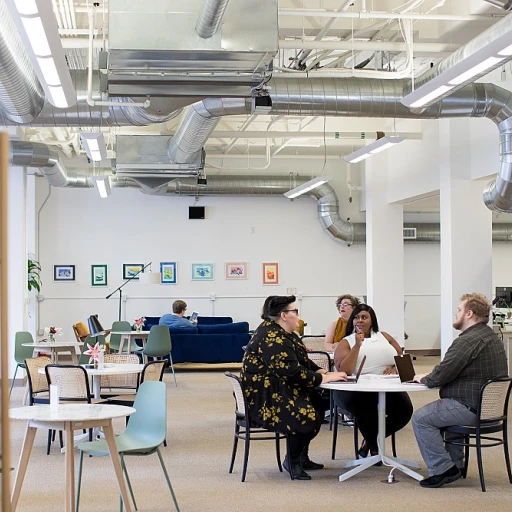
The Path to Becoming a Pharmacist
Initiating the Journey Towards a Pharmacy Degree
The path to becoming a pharmacist is a structured and demanding process that begins long before entering pharmacy school. Prospective students must first complete prerequisite courses during their high school or undergraduate years. These courses usually cover essential subjects like chemistry, biology, and mathematics. The pharmd program, which is the professional degree aspiring pharmacists aim to achieve, often requires a strong foundation in these areas.
Options for pharmacy education can vary depending on the individual’s academic background. Some students enter a direct entry program, which allows them to transition from high school directly into a pharmacy degree pathway. Others might opt for a bachelor degree in a related field before applying to pharmacy school. No matter the route, meeting the requirements set by each institution is mandatory.
Before diving into the rigors of a pharmacy education, thorough research into pharmacy schools is crucial. Prospective students should consider factors such as program length, pharmacy practice opportunities, and financial aid options. The aim is to find a program that aligns with their career goals and personal circumstances.
It's important to note the significance of a solid understanding of intellectual property risks in this field, as pharmacists play a crucial role in the healthcare system and must be well-versed in both scientific and legal aspects of their practice.
Breaking Down the Timeline
Breaking Down the Steps to Becoming a Pharmacist
Embarking on the journey to become a pharmacist involves a carefully structured timeline, which begins long before pharmacy school. Aspiring pharmacists usually start their path during high school, focusing on prerequisite courses necessary for college admissions. For those opting for a direct entry into pharmacy education, enrolling in a doctor pharmacy (PharmD) program is the conventional path. These programs typically require a minimum of two years of undergraduate coursework before diving into a comprehensive PharmD program. It's a rigorous academic commitment but essential for a successful pharmacy career. Most pharmacy programs span four academic years, although some schools offer accelerated three-year options. Throughout these years, students are immersed in foundational subjects like chemistry, biology, and pharmaceutics. But it's not all theory—practical application through lab work is integral. Interestingly, some pharmacy schools are now integrating more health care topics, reflecting the evolving nature of pharmacy practice in broader medical settings. This not only enhances the expertise of future pharmacists but also expands their potential roles in the professional sphere. For students concerned about the financial aspects of these programs, many institutions offer financial aid options. Resources are available to assist with the significant investment required to attain a pharmacy degree. From beginning college to graduating with a PharmD degree, students are expected to commit a potential total of six to eight years, depending on prior educational background and the structure of their chosen program. It's a demanding yet rewarding journey that shapes knowledgeable, skilled pharmacists ready to enter professional practice. A diverse array of other routes also exists for enhancing one's career, allowing for continued growth and adaptability within the pharmacy profession and beyond.Continuous Learning in Pharmacy
The Vital Role of Continuous Education in Pharmacy Practice
In the field of pharmacy, continuous learning is not just a requirement but a fundamental aspect of maintaining competence and enhancing professional growth. For pharmacists, staying up-to-date with the latest developments in pharmacy practice, science, and health care is crucial to providing optimal patient care. Pharmacists often embark on continuous education to keep abreast of evolving pharmaceutical knowledge and practices. This ongoing education journey begins even before they complete their PharmD program. Many students, while still in pharmacy school, are encouraged to engage with additional learning opportunities beyond their standard curriculum. These opportunities might include attending workshops, participating in relevant courses, or engaging in internship programs. Once the academic path is complete and the degree obtained, pharmacists are required to fulfill specific licensure requirements, which often include proof of continued education. This can encompass a variety of structured programs offered by professional bodies or institutions, which may cover new drug therapies, emerging technologies, and innovative health care strategies. Incorporating continuous learning into one’s career is essential for those pursuing a school pharmacy degree as it ensures they remain viable in the highly competitive pharmacy job market. Pharmacists who consistently update their knowledge base not only meet the mandatory prerequisites but also enhance their capabilities for patient care and collaborate more effectively as part of interdisciplinary health care teams. Moreover, continuous education supports pharmacists in fulfilling their professional goals and expanding their career prospects. With the pharmacy landscape constantly evolving due to new regulations, medical advancements, and technology integration, being proactive in education allows pharmacists to adapt seamlessly to changes. This commitment to learning facilitates the retention and application of knowledge that significantly benefits pharmacy students and professionals alike. In today’s fast-paced world, strategically leveraging network solutions can be instrumental in enhancing one’s learning journey, opening avenues for more dynamic engagement with emerging trends and knowledge sharing within the community.Challenges in Pharmacy Education
The Rigorous Journey of Pharmacy Education
Pharmacy education is a demanding journey that requires students to navigate various challenges to meet the necessary requirements. Prospective pharmacists start by enrolling in pharmacy schools, where the focus is on both theoretical and practical components of the pharmacy program. The goal is to mold students into competent professionals ready to address the complexities of pharmacy practice. To gain entry into a Doctor of Pharmacy (PharmD) program, students must first complete a series of prerequisite courses, typically during a bachelor degree or as part of a pre pharmacy track. These courses lay the foundation for the more specialized knowledge that will be gained in pharmacy school. The transition from high school to college pharmacy requires students to adapt to the increased academic workload and demands. Once admitted into the PharmD program, students are met with a comprehensive curriculum spanning several years. This includes a mix of classroom-based learning and experiential education. The integration of real-world applications within the program ensures that students acquire not only theoretical knowledge but also practical skills essential for their pharmacy degree. Funding this extensive education journey can also be a significant challenge. Many students rely on financial aid and scholarships to help offset the cost of years spent pursuing their pharm degree. As future healthcare professionals, aspiring pharmacists must remain committed to their studies, despite the financial pressures they may face. Additionally, pharmacy students need to prepare for the licensing examinations which are a critical step in becoming a practicing pharmacist. The combination of rigorous coursework, exams, and the need to develop professional competencies highlights the challenging nature of pharmacy education. Despite these hurdles, the rewards of a career in pharmacy are substantial. The ability to make a meaningful impact in healthcare, coupled with a stable and respected profession, makes the challenges worthwhile for those who complete the journey to become pharmacists. The effort invested throughout these years is crucial in ensuring a robust and competent entry into the world of pharmacy. This preparation encompasses varied programs, from direct entry paths to prolonged academic stints, reinforcing the diverse nature of pharmacy education.The Role of Internships and Residencies
Internships and Residencies: The Crucial Experience Phase
Internships and residencies are integral components of pharmacy education, offering students the essential practical exposure necessary to transition from theoretical learning to real-world pharmacy practice. As a significant part of a pharmacist's career journey, these experiences bridge the gap between classroom knowledge and hands-on application. Participating in internships allows pharmacy students to immerse themselves in the environment they will eventually work in, gaining insights that books and lectures alone cannot provide. These opportunities typically include:- Applying Classroom Learning: Students have the chance to put into practice what they've learned throughout their Doctor of Pharmacy (PharmD) program. They can witness firsthand how theories from pharmacy degrees are implemented in everyday situations.
- Understanding Diverse Pharmacy Settings: Students might rotate through various settings—such as community pharmacies, hospitals, and specialty clinics—offering a broader perspective on the healthcare landscape.
- Networking and Professional Growth: Working alongside experienced pharmacists, students can build professional connections that may be beneficial for future career advancements.












